Tag Archive for: Vineyards
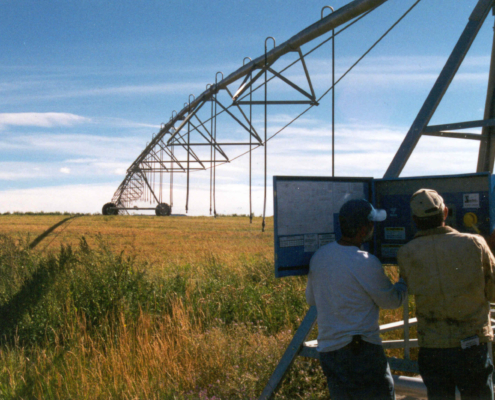 Mike Morris, NCAT
https://attra.ncat.org/wp-content/uploads/2022/01/irrigation-system-scaled-1.jpg
1933
2560
NCAT IT
/wp-content/uploads/2022/06/ATTRAlogo_RGB-340x156.png
NCAT IT2022-06-29 15:38:302024-01-10 11:27:58Soil Moisture Monitoring: Low-Cost Tools and Methods
Mike Morris, NCAT
https://attra.ncat.org/wp-content/uploads/2022/01/irrigation-system-scaled-1.jpg
1933
2560
NCAT IT
/wp-content/uploads/2022/06/ATTRAlogo_RGB-340x156.png
NCAT IT2022-06-29 15:38:302024-01-10 11:27:58Soil Moisture Monitoring: Low-Cost Tools and Methods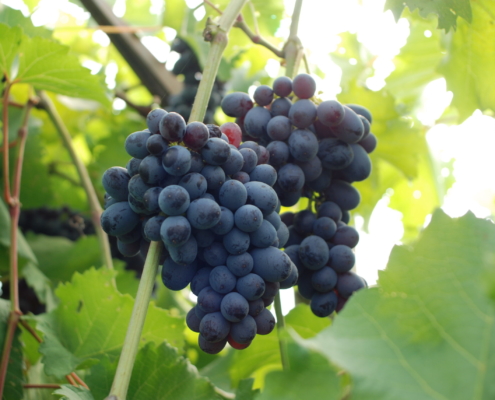 https://attra.ncat.org/wp-content/uploads/2021/11/01_Faith-grapes-scaled-1.jpg
1714
2560
Amy Smith
/wp-content/uploads/2022/06/ATTRAlogo_RGB-340x156.png
Amy Smith2022-06-27 09:53:432023-02-08 14:45:47High Tunnel Grapes: Establishment
https://attra.ncat.org/wp-content/uploads/2021/11/01_Faith-grapes-scaled-1.jpg
1714
2560
Amy Smith
/wp-content/uploads/2022/06/ATTRAlogo_RGB-340x156.png
Amy Smith2022-06-27 09:53:432023-02-08 14:45:47High Tunnel Grapes: Establishment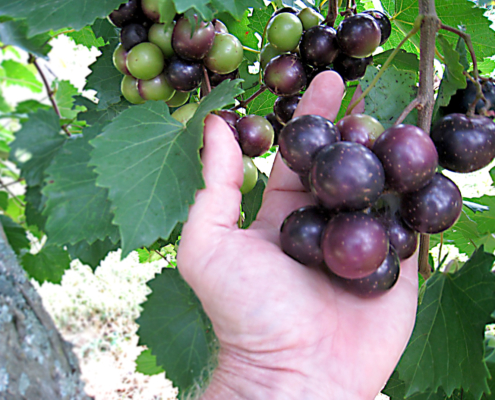 https://attra.ncat.org/wp-content/uploads/2022/04/image19.jpg
1073
1430
NCAT IT
/wp-content/uploads/2022/06/ATTRAlogo_RGB-340x156.png
NCAT IT2022-06-23 15:42:252023-12-05 15:29:57Fruit Trees, Bushes, and Vines for Natural Growing in the Ozarks
https://attra.ncat.org/wp-content/uploads/2022/04/image19.jpg
1073
1430
NCAT IT
/wp-content/uploads/2022/06/ATTRAlogo_RGB-340x156.png
NCAT IT2022-06-23 15:42:252023-12-05 15:29:57Fruit Trees, Bushes, and Vines for Natural Growing in the Ozarks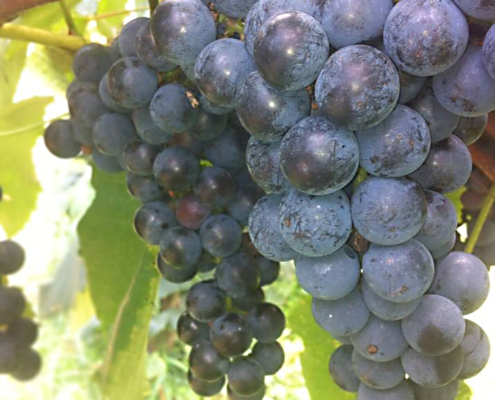
Grapes in High Tunnels Can Greatly Reduce Pesticide Use and Increase Yields
As a young, would-be organic farmer in the early 1970s, I drooled over the nursery catalog photographs of plump, succulent bunches of grapes as if they were the very essence and promise of good farming and good health. The genus containing grapes is Vitis, a word from the proto-Indo-European root, which means “living or life itself.” Wow. Grapes=life itself!
By Guy K. Ames, NCAT Horticulture Specialist
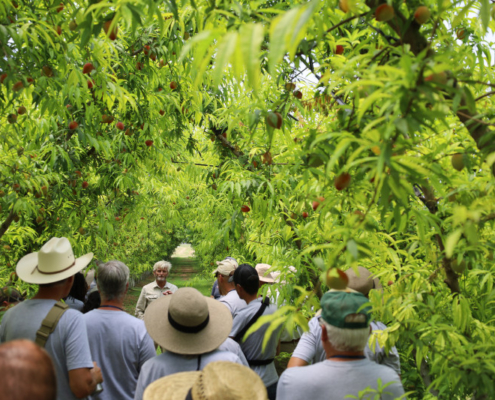
Risk Management on a Diverse Orchard and Nursery
This virtual workshop includes a video tour of Ames Orchard and…

Episode 221. Meet NCAT: Katherine Favor says agroforestry can plant the seeds of sustainability
In this episode of Voices from the Field, NCAT Sustainable Agriculture…

Vineyard Agroforestry: Growing Grapes in the Era of Climate Change
I had the privilege of undergoing my graduate school research in one of the best places on earth: Mendoza, Argentina. Mendoza, like many parts of California, is an arid region with very little rainfall, similar soils, and similar weather patterns. And, like California, it grows great wine. Unlike California, though, Mendoza still has many vineyards that are intercropped with trees in vineyard agroforestry systems. That's why, when I decided to study arid vineyard agroforestry systems for my master’s research, Mendoza is where I journeyed to.
by Katherine Favor, Sustainable Agriculture Specialist
by Katherine Favor, Sustainable Agriculture Specialist
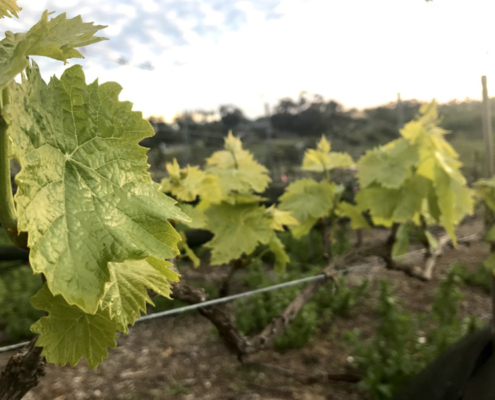
A Spring IPM Toolbox for Controlling Powdery Mildew in Vineyards
Powdery mildew has plagued vineyards since time immemorial. If temperatures reach between 70 and 85 degrees, chances are, powdery mildew has woken up from its slumber and is ready to infect your grapes. When left unchecked, this fungus can reduce vine growth, sabotage yields, and reduce fruit quality. There are all sorts of practices in our integrated pest-management toolbox that we can use to control powdery mildew. Prevention is always number one, but there are plenty of mitigation strategies we can employ as well. Here are some good examples:
By Katherine Favor, NCAT Sustainable Agriculture Specialist
By Katherine Favor, NCAT Sustainable Agriculture Specialist
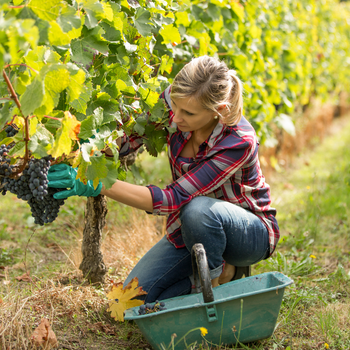 https://attra.ncat.org/wp-content/uploads/2022/08/Lady-with-Grapes.png
350
350
NCAT IT
/wp-content/uploads/2022/06/ATTRAlogo_RGB-340x156.png
NCAT IT2018-09-28 11:57:072023-12-11 08:20:10Vineyards
https://attra.ncat.org/wp-content/uploads/2022/08/Lady-with-Grapes.png
350
350
NCAT IT
/wp-content/uploads/2022/06/ATTRAlogo_RGB-340x156.png
NCAT IT2018-09-28 11:57:072023-12-11 08:20:10VineyardsTag Archive for: Vineyards
 Mike Morris, NCAT
https://attra.ncat.org/wp-content/uploads/2022/01/irrigation-system-scaled-1.jpg
1933
2560
NCAT IT
/wp-content/uploads/2022/06/ATTRAlogo_RGB-340x156.png
NCAT IT2022-06-29 15:38:302024-01-10 11:27:58Soil Moisture Monitoring: Low-Cost Tools and Methods
Mike Morris, NCAT
https://attra.ncat.org/wp-content/uploads/2022/01/irrigation-system-scaled-1.jpg
1933
2560
NCAT IT
/wp-content/uploads/2022/06/ATTRAlogo_RGB-340x156.png
NCAT IT2022-06-29 15:38:302024-01-10 11:27:58Soil Moisture Monitoring: Low-Cost Tools and Methods https://attra.ncat.org/wp-content/uploads/2021/11/01_Faith-grapes-scaled-1.jpg
1714
2560
Amy Smith
/wp-content/uploads/2022/06/ATTRAlogo_RGB-340x156.png
Amy Smith2022-06-27 09:53:432023-02-08 14:45:47High Tunnel Grapes: Establishment
https://attra.ncat.org/wp-content/uploads/2021/11/01_Faith-grapes-scaled-1.jpg
1714
2560
Amy Smith
/wp-content/uploads/2022/06/ATTRAlogo_RGB-340x156.png
Amy Smith2022-06-27 09:53:432023-02-08 14:45:47High Tunnel Grapes: Establishment https://attra.ncat.org/wp-content/uploads/2022/04/image19.jpg
1073
1430
NCAT IT
/wp-content/uploads/2022/06/ATTRAlogo_RGB-340x156.png
NCAT IT2022-06-23 15:42:252023-12-05 15:29:57Fruit Trees, Bushes, and Vines for Natural Growing in the Ozarks
https://attra.ncat.org/wp-content/uploads/2022/04/image19.jpg
1073
1430
NCAT IT
/wp-content/uploads/2022/06/ATTRAlogo_RGB-340x156.png
NCAT IT2022-06-23 15:42:252023-12-05 15:29:57Fruit Trees, Bushes, and Vines for Natural Growing in the Ozarks
Grapes in High Tunnels Can Greatly Reduce Pesticide Use and Increase Yields
As a young, would-be organic farmer in the early 1970s, I drooled over the nursery catalog photographs of plump, succulent bunches of grapes as if they were the very essence and promise of good farming and good health. The genus containing grapes is Vitis, a word from the proto-Indo-European root, which means “living or life itself.” Wow. Grapes=life itself!
By Guy K. Ames, NCAT Horticulture Specialist

Risk Management on a Diverse Orchard and Nursery
This virtual workshop includes a video tour of Ames Orchard and…

Episode 221. Meet NCAT: Katherine Favor says agroforestry can plant the seeds of sustainability
In this episode of Voices from the Field, NCAT Sustainable Agriculture…

Vineyard Agroforestry: Growing Grapes in the Era of Climate Change
I had the privilege of undergoing my graduate school research in one of the best places on earth: Mendoza, Argentina. Mendoza, like many parts of California, is an arid region with very little rainfall, similar soils, and similar weather patterns. And, like California, it grows great wine. Unlike California, though, Mendoza still has many vineyards that are intercropped with trees in vineyard agroforestry systems. That's why, when I decided to study arid vineyard agroforestry systems for my master’s research, Mendoza is where I journeyed to.
by Katherine Favor, Sustainable Agriculture Specialist
by Katherine Favor, Sustainable Agriculture Specialist

A Spring IPM Toolbox for Controlling Powdery Mildew in Vineyards
Powdery mildew has plagued vineyards since time immemorial. If temperatures reach between 70 and 85 degrees, chances are, powdery mildew has woken up from its slumber and is ready to infect your grapes. When left unchecked, this fungus can reduce vine growth, sabotage yields, and reduce fruit quality. There are all sorts of practices in our integrated pest-management toolbox that we can use to control powdery mildew. Prevention is always number one, but there are plenty of mitigation strategies we can employ as well. Here are some good examples:
By Katherine Favor, NCAT Sustainable Agriculture Specialist
By Katherine Favor, NCAT Sustainable Agriculture Specialist
 https://attra.ncat.org/wp-content/uploads/2022/08/Lady-with-Grapes.png
350
350
NCAT IT
/wp-content/uploads/2022/06/ATTRAlogo_RGB-340x156.png
NCAT IT2018-09-28 11:57:072023-12-11 08:20:10Vineyards
https://attra.ncat.org/wp-content/uploads/2022/08/Lady-with-Grapes.png
350
350
NCAT IT
/wp-content/uploads/2022/06/ATTRAlogo_RGB-340x156.png
NCAT IT2018-09-28 11:57:072023-12-11 08:20:10VineyardsTag Archive for: Vineyards
 Mike Morris, NCAT
https://attra.ncat.org/wp-content/uploads/2022/01/irrigation-system-scaled-1.jpg
1933
2560
NCAT IT
/wp-content/uploads/2022/06/ATTRAlogo_RGB-340x156.png
NCAT IT2022-06-29 15:38:302024-01-10 11:27:58Soil Moisture Monitoring: Low-Cost Tools and Methods
Mike Morris, NCAT
https://attra.ncat.org/wp-content/uploads/2022/01/irrigation-system-scaled-1.jpg
1933
2560
NCAT IT
/wp-content/uploads/2022/06/ATTRAlogo_RGB-340x156.png
NCAT IT2022-06-29 15:38:302024-01-10 11:27:58Soil Moisture Monitoring: Low-Cost Tools and Methods https://attra.ncat.org/wp-content/uploads/2021/11/01_Faith-grapes-scaled-1.jpg
1714
2560
Amy Smith
/wp-content/uploads/2022/06/ATTRAlogo_RGB-340x156.png
Amy Smith2022-06-27 09:53:432023-02-08 14:45:47High Tunnel Grapes: Establishment
https://attra.ncat.org/wp-content/uploads/2021/11/01_Faith-grapes-scaled-1.jpg
1714
2560
Amy Smith
/wp-content/uploads/2022/06/ATTRAlogo_RGB-340x156.png
Amy Smith2022-06-27 09:53:432023-02-08 14:45:47High Tunnel Grapes: Establishment https://attra.ncat.org/wp-content/uploads/2022/04/image19.jpg
1073
1430
NCAT IT
/wp-content/uploads/2022/06/ATTRAlogo_RGB-340x156.png
NCAT IT2022-06-23 15:42:252023-12-05 15:29:57Fruit Trees, Bushes, and Vines for Natural Growing in the Ozarks
https://attra.ncat.org/wp-content/uploads/2022/04/image19.jpg
1073
1430
NCAT IT
/wp-content/uploads/2022/06/ATTRAlogo_RGB-340x156.png
NCAT IT2022-06-23 15:42:252023-12-05 15:29:57Fruit Trees, Bushes, and Vines for Natural Growing in the Ozarks
Grapes in High Tunnels Can Greatly Reduce Pesticide Use and Increase Yields
As a young, would-be organic farmer in the early 1970s, I drooled over the nursery catalog photographs of plump, succulent bunches of grapes as if they were the very essence and promise of good farming and good health. The genus containing grapes is Vitis, a word from the proto-Indo-European root, which means “living or life itself.” Wow. Grapes=life itself!
By Guy K. Ames, NCAT Horticulture Specialist

Risk Management on a Diverse Orchard and Nursery
This virtual workshop includes a video tour of Ames Orchard and…

Episode 221. Meet NCAT: Katherine Favor says agroforestry can plant the seeds of sustainability
In this episode of Voices from the Field, NCAT Sustainable Agriculture…

Vineyard Agroforestry: Growing Grapes in the Era of Climate Change
I had the privilege of undergoing my graduate school research in one of the best places on earth: Mendoza, Argentina. Mendoza, like many parts of California, is an arid region with very little rainfall, similar soils, and similar weather patterns. And, like California, it grows great wine. Unlike California, though, Mendoza still has many vineyards that are intercropped with trees in vineyard agroforestry systems. That's why, when I decided to study arid vineyard agroforestry systems for my master’s research, Mendoza is where I journeyed to.
by Katherine Favor, Sustainable Agriculture Specialist
by Katherine Favor, Sustainable Agriculture Specialist

A Spring IPM Toolbox for Controlling Powdery Mildew in Vineyards
Powdery mildew has plagued vineyards since time immemorial. If temperatures reach between 70 and 85 degrees, chances are, powdery mildew has woken up from its slumber and is ready to infect your grapes. When left unchecked, this fungus can reduce vine growth, sabotage yields, and reduce fruit quality. There are all sorts of practices in our integrated pest-management toolbox that we can use to control powdery mildew. Prevention is always number one, but there are plenty of mitigation strategies we can employ as well. Here are some good examples:
By Katherine Favor, NCAT Sustainable Agriculture Specialist
By Katherine Favor, NCAT Sustainable Agriculture Specialist
 https://attra.ncat.org/wp-content/uploads/2022/08/Lady-with-Grapes.png
350
350
NCAT IT
/wp-content/uploads/2022/06/ATTRAlogo_RGB-340x156.png
NCAT IT2018-09-28 11:57:072023-12-11 08:20:10Vineyards
https://attra.ncat.org/wp-content/uploads/2022/08/Lady-with-Grapes.png
350
350
NCAT IT
/wp-content/uploads/2022/06/ATTRAlogo_RGB-340x156.png
NCAT IT2018-09-28 11:57:072023-12-11 08:20:10Vineyards
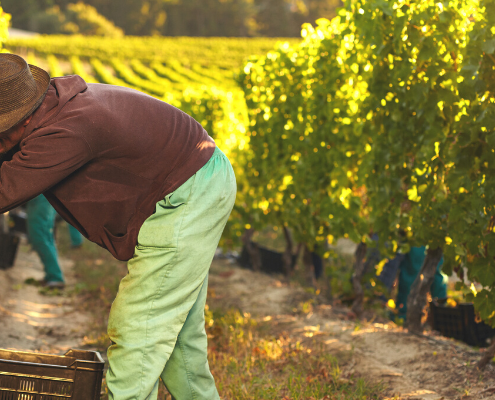 CanvaPro
CanvaPro